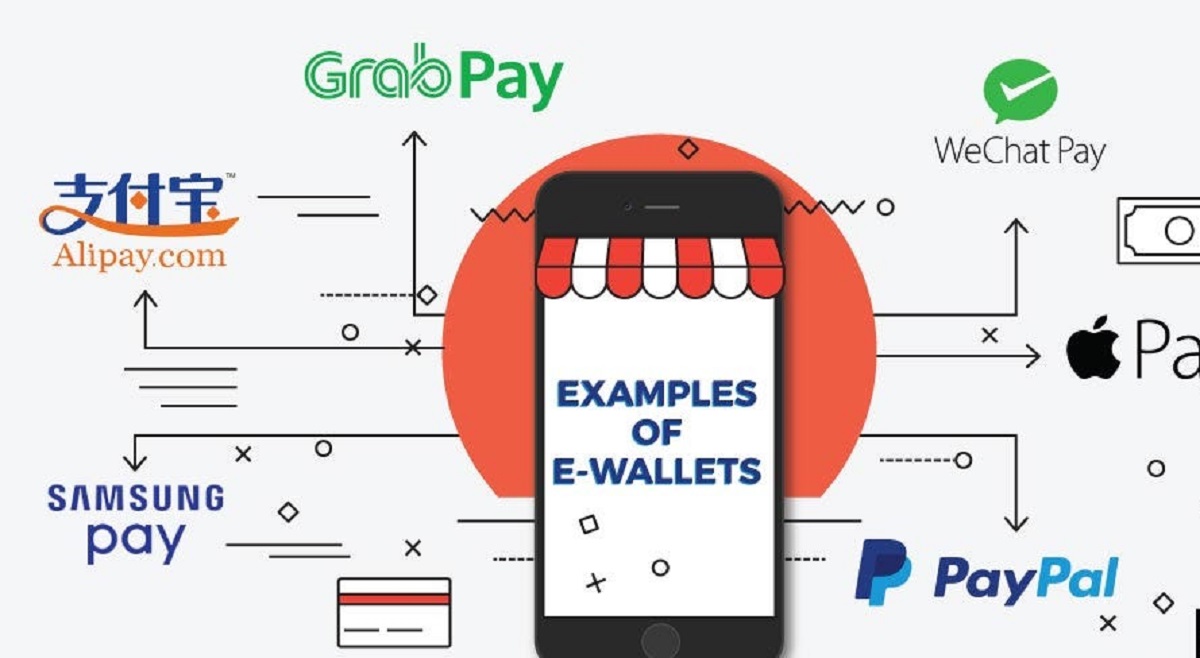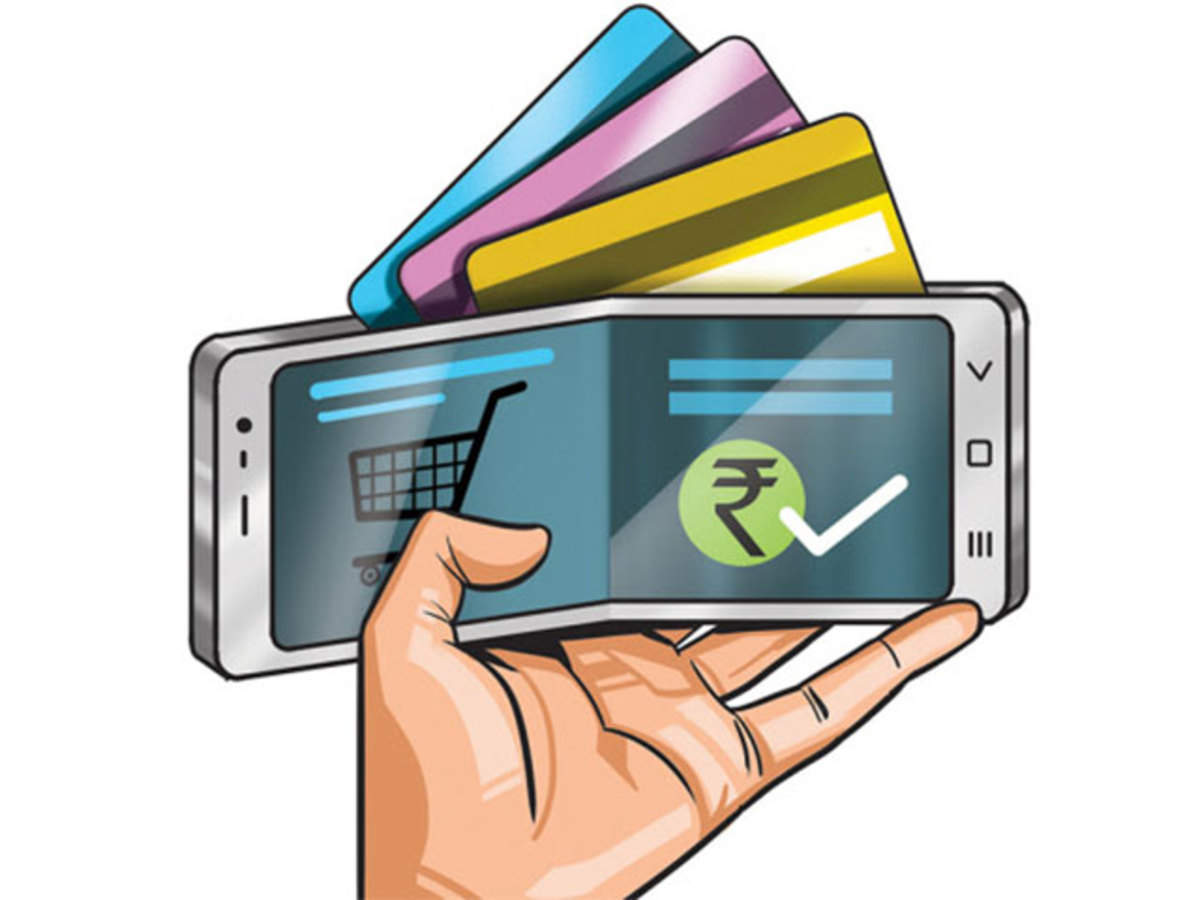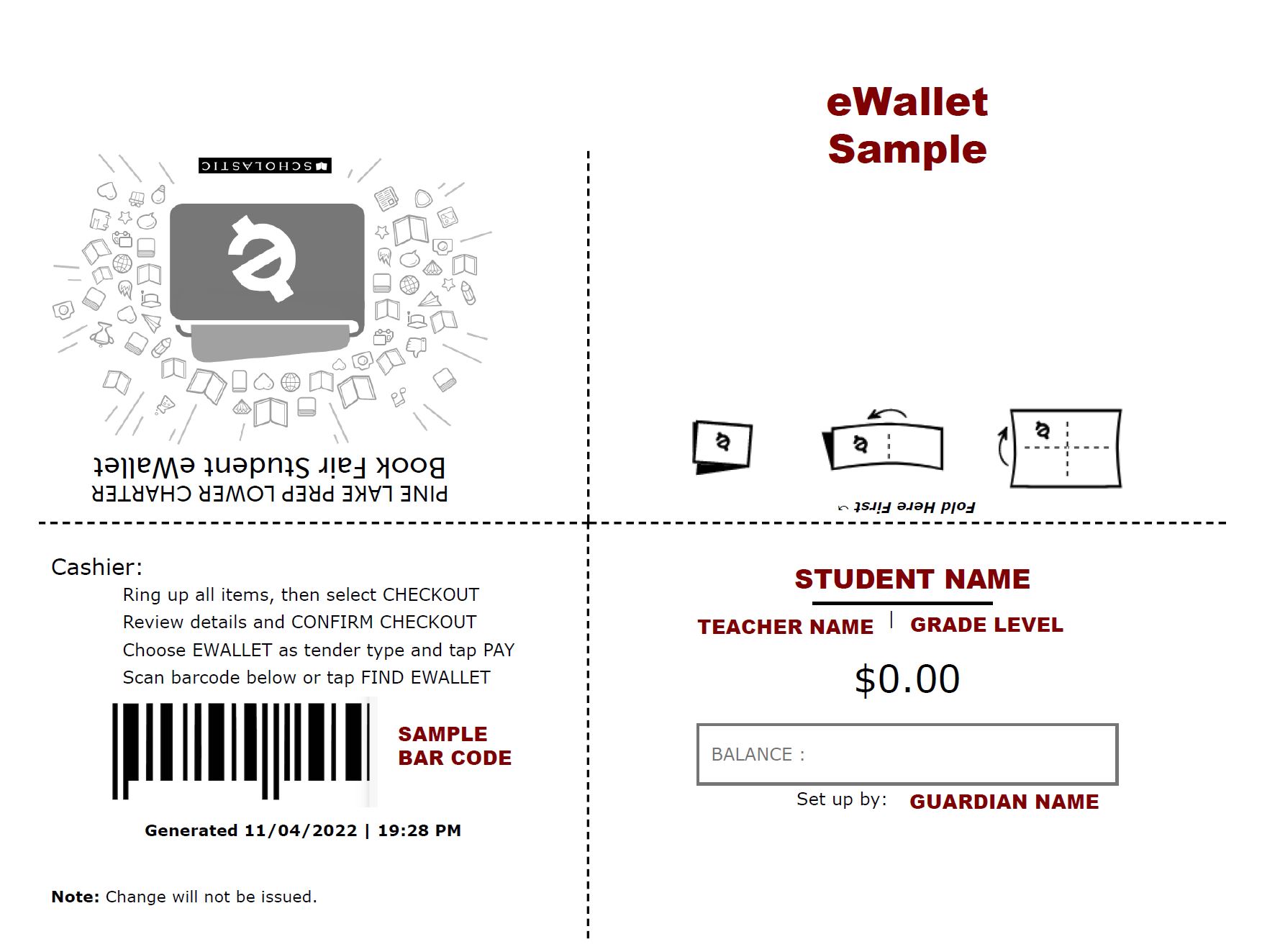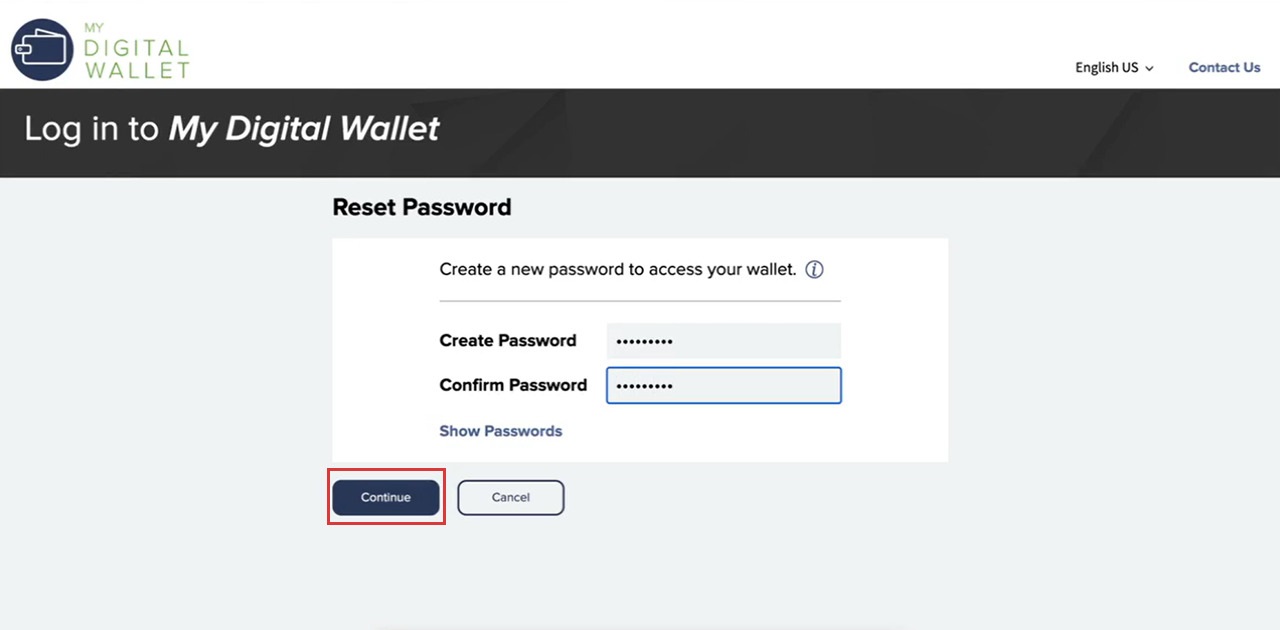Introduction
Welcome to the world of digital payments and e-commerce. With advancements in technology, the way we handle transactions and manage our money has been revolutionized. One of the latest innovations in this realm is the introduction of e-wallets. In this digital era, traditional wallets are being replaced by virtual counterparts that offer convenience, security, and accessibility.
E-wallets, also known as digital wallets or mobile wallets, have gained popularity as a preferred method of payment in recent years. These digital payment solutions allow users to store their financial information securely on their smartphones or other electronic devices, eliminating the need to carry physical cash or multiple cards. With just a few taps, users can make purchases, transfer money, and conduct various financial transactions seamlessly and swiftly.
The rise of e-wallets can be attributed to the increasing utilization of mobile devices, the growth of e-commerce platforms, and the need for faster and more convenient payment options. In this article, we will take a closer look at how e-wallets work, the process of setting up an e-wallet account, adding funds to your e-wallet, making payments, security measures, benefits, limitations, and popular e-wallet options available in the market.
Whether you’re a tech-savvy individual or a business owner looking to explore new payment methods, understanding the ins and outs of e-wallets will empower you to embrace the digital revolution in finance confidently. So, let’s dive into the world of e-wallets and discover the exciting possibilities they bring to the table.
What is an E-wallet?
An e-wallet, also known as a digital wallet or mobile wallet, is a virtual platform that allows individuals to store, manage, and conduct electronic transactions securely. It serves as a modern alternative to traditional wallets by providing users with a convenient and centralized space to store their financial information, such as credit card details, debit card information, bank account details, and even loyalty cards.
E-wallets act as a bridge between various payment methods and merchants or service providers, facilitating quick and secure transactions. With an e-wallet, users can make payments, transfer funds, and even store digital receipts, eliminating the hassle of carrying physical cash, cards, or bills. E-wallets can be accessed through multiple devices like smartphones, tablets, or computers, making them highly versatile and user-friendly.
What sets e-wallets apart from conventional payment methods is their seamless integration with various platforms and services. Whether you are shopping online, making in-store purchases, paying utility bills, or even booking flights and accommodations, e-wallets offer a one-stop solution for all your financial transactions. They provide a unified interface that allows users to manage their finances and conduct transactions without the need for multiple applications or physical payment instruments.
E-wallets essentially work on a digital representation of your payment information. When you make a transaction, the e-wallet securely transfers the necessary payment details to the merchant or service provider, ensuring the privacy and security of your financial information. This process often involves encryption techniques and secure authentication protocols to safeguard your data from unauthorized access and fraudulent activities.
In addition to payment convenience, e-wallets often provide additional features and benefits. These may include rewards programs, cashback offers, loyalty points, and personalized discounts. Some e-wallets also offer budgeting tools, expense tracking, and financial management features to help users better understand and control their spending habits.
Overall, e-wallets have emerged as a game-changer in the world of digital transactions. By providing a secure, convenient, and streamlined approach to payments, e-wallets are reshaping the way we handle our finances. In the next sections, we will delve deeper into how e-wallets actually work and the steps involved in setting up and using them.
How E-wallets Work
To understand how e-wallets work, let’s take a closer look at the underlying process and technology behind these digital payment solutions. At its core, an e-wallet operates using two main components: the software application and the secure storage that holds your payment information.
When you set up an e-wallet, you typically download and install a mobile application or software provided by the e-wallet provider. This application acts as the interface between you and your digital wallet. Once installed, you will need to create an account by providing your personal information, such as name, email address, and phone number. Some e-wallets may also require you to undergo a verification process for added security.
After the account setup, you can start adding your payment information to the e-wallet. This can include credit or debit card details, bank account numbers, and even digital currencies like Bitcoin. The e-wallet stores these details in an encrypted format to ensure the security of your information.
When it’s time to make a payment or transaction, the e-wallet uses a variety of technologies to securely process the transaction. One common technology used is near-field communication (NFC), which allows for contactless transactions by simply tapping your device on a compatible payment terminal. This method is commonly used for in-store purchases or when transferring money between two devices in close proximity.
For online transactions, e-wallets often generate a unique token or virtual card number to protect your actual payment details. This token serves as a virtual representation of your payment information and is used during the transaction process. By using tokens, your actual card or account details are kept hidden, reducing the risk of unauthorized access or fraud.
When you initiate a payment through your e-wallet, the software securely communicates with the merchant’s payment gateway, exchanging the necessary information to complete the transaction. This process may involve encryption and secure data transfer protocols to safeguard your information.
Once the payment is completed, you will be notified about the status of the transaction through the e-wallet application. Some e-wallets also provide digital receipts, allowing you to easily track and manage your expenses within the application itself.
It’s important to note that e-wallets typically require an active internet connection for most transactions, as they rely on online connectivity to synchronize payment information and ensure the security of your transactions. However, some e-wallets also offer limited offline functionality, allowing you to make payments even when you’re temporarily disconnected from the internet.
Understanding the inner workings of e-wallets provides insight into the convenience, security, and efficiency they bring to the table. In the next sections, we will explore the process of setting up an e-wallet account, adding funds to your e-wallet, making payments, and the security measures implemented by e-wallet providers.
Setting Up an E-wallet Account
Setting up an e-wallet account is a straightforward process that typically involves a few simple steps. Here is a general overview of how to get started with an e-wallet.
1. Choose an E-wallet Provider: Begin by researching and selecting a reputable e-wallet provider that suits your needs. There are various options available in the market, each with its own features, compatibility, and security measures. Some popular e-wallet providers include PayPal, Apple Pay, Google Pay, and Samsung Pay.
2. Download and Install the App: Once you have chosen an e-wallet provider, visit their website or respective app stores to download and install the e-wallet application on your device. The app is usually available for both iOS and Android devices.
3. Create an Account: After installing the app, open it and follow the prompts to create a new account. This will typically involve providing your personal details, such as your name, email address, and phone number. Some e-wallets may also require additional verification steps for enhanced security.
4. Set Up Security Features: To protect your e-wallet and ensure the safety of your funds, you will need to set up security features such as a PIN code, fingerprint or facial recognition, or a pattern lock. Choose a strong and unique code or authentication method to prevent unauthorized access to your e-wallet.
5. Link Your Payment Methods: After creating an account, you will need to link your preferred payment methods to your e-wallet. This can include credit or debit cards, bank accounts, or other digital wallets. The process may vary depending on the e-wallet provider, but it typically involves entering your payment information and verifying the connected accounts.
6. Optional: Enable Additional Features: Depending on the e-wallet provider, there may be additional features or services you can activate within the e-wallet app. These can include loyalty program integration, budgeting tools, receipt tracking, or even peer-to-peer payment capabilities. Explore the options available and enable any features that align with your needs.
7. Start Using Your E-wallet: Once your e-wallet account is set up and your payment methods are linked, you are ready to start using your e-wallet. Use it for making purchases online or in-store, sending money to friends and family, paying bills, or any other supported transactions. Simply open the app, authenticate yourself, select the payment method, and follow the prompts to complete the transaction.
It’s important to note that the specific steps and requirements may vary between e-wallet providers. It is always recommended to familiarize yourself with the specific instructions provided by the e-wallet provider you choose. Additionally, ensure that you read and understand the terms and conditions, privacy policy, and any associated fees or charges before using the e-wallet.
Setting up an e-wallet account is a quick and efficient process, giving you access to a world of seamless digital transactions. In the next section, we will explore how to add funds to your e-wallet for convenient and hassle-free payments.
Adding Funds to Your E-wallet
Once you have set up your e-wallet account, the next step is to add funds to your wallet. This allows you to make convenient and quick payments without the need for physical cash or card transactions. Adding funds to your e-wallet is typically a straightforward process that can be done through various methods. Here are some common ways to add funds to your e-wallet.
1. Link Your Bank Account: One of the most common methods is to link your bank account to your e-wallet. This enables you to transfer funds directly from your bank account into your e-wallet. To link your bank account, you will typically need to provide your account details, such as your account number and banking institution information. Some e-wallets may require an additional verification process to ensure the security of the transaction.
2. Use a Credit or Debit Card: Many e-wallets allow you to add funds by linking a credit or debit card to your account. This option gives you the flexibility to transfer funds from your card into your e-wallet, providing instant access to your funds. To add funds using a card, you will need to enter your card details, including the card number, expiry date, and security code.
3. Receive Funds from Others: Depending on the e-wallet provider, you may have the option to receive funds from other individuals who are using the same e-wallet. This can be done by sharing your e-wallet ID or contact information with the person sending you funds. They can then initiate a transfer directly into your e-wallet, which will reflect as an added balance in your account.
4. Direct Deposit: Some e-wallets allow you to receive direct deposits, such as salary payments or government benefits, into your e-wallet. This eliminates the need for paper checks or physical transfer of funds. By providing your e-wallet account details to your employer or the relevant entity, they can deposit the funds directly into your e-wallet account, where they will be available for use.
5. Cash Reload: Certain e-wallets provide the option to add funds by physically depositing cash at authorized locations. These can include partnering banks, retail stores, or designated kiosks. Simply visit the designated location, provide your e-wallet ID or mobile number, and hand over the cash. The funds will be credited to your e-wallet account, ready for your transactions.
It’s important to be aware that each e-wallet provider may offer different funding options and may have associated fees or limits. Take the time to familiarize yourself with the specific terms and conditions of your chosen e-wallet to make informed decisions about adding funds.
Adding funds to your e-wallet provides you with the flexibility to make transactions easily and securely without relying on traditional payment methods. In the next section, we will explore how e-wallets facilitate seamless payments, both online and in-store.
Making Payments with an E-wallet
Making payments with an e-wallet is a convenient and efficient process that simplifies transactions both online and in-store. Whether you’re shopping online or paying at a physical retail location, e-wallets offer a seamless and secure way to complete your transactions. Here’s how payments are made using an e-wallet.
1. Online Payments: When making online purchases, look for the e-wallet payment option at the checkout page of the website or app. Select the e-wallet of your choice, and the system will redirect you to the e-wallet application on your device. You will need to authenticate yourself using your chosen security method, such as a PIN code or biometric authentication. Once verified, the payment details will be automatically filled in, and you can proceed to confirm the transaction. The e-wallet securely transfers the payment information to the merchant, and you will receive a notification or confirmation of the successful payment.
2. In-store Payments: Many e-wallet providers offer the option to make contactless payments using near-field communication (NFC) technology. Look for the contactless payment symbol at the payment terminal or tell the cashier that you would like to pay using your e-wallet. Open your e-wallet app and select the payment method you wish to use. Hold your device near the payment terminal or tap it, depending on the specific instructions provided. The e-wallet will securely transmit the payment details to the terminal for processing. Once the payment is approved, you will receive a confirmation on your device or through the e-wallet app.
3. Peer-to-peer Payments: E-wallets often allow users to transfer funds directly to other users, making it easy to send money to friends, family, or colleagues. To make a peer-to-peer payment, open the e-wallet app and select the option for sending money or peer-to-peer transfer. Enter the recipient’s e-wallet ID or choose a contact from your phone’s address book. Specify the amount you wish to transfer and complete any additional verification steps required by the e-wallet. Once the transfer is initiated, the recipient will be notified, and the funds will be deducted from your e-wallet balance and added to theirs.
4. Bill Payments: Many e-wallets also offer the convenience of paying bills directly through the app. This can include utility bills, mobile phone bills, internet bills, and more. Open your e-wallet app and navigate to the bill payment section. Enter the necessary details, such as the biller’s name, account number, and the amount due. Verify the payment details and proceed to complete the transaction. The e-wallet will securely transmit the payment information to the biller, and you will receive a confirmation of the successful payment.
It’s important to note that different e-wallet providers may have varying acceptance at merchants or may have restrictions in certain regions. Additionally, some e-wallets may offer additional features like splitting bills, requesting money, or the ability to store digital loyalty cards for added convenience.
E-wallets have revolutionized the way payments are made, providing a seamless and secure experience for users. In the next section, we will dive into the security measures implemented by e-wallet providers to protect your funds and personal information.
Security Measures for E-wallets
As e-wallets gain popularity, ensuring the security of users’ funds and personal information is a top priority for e-wallet providers. To instill confidence in users and protect against unauthorized access and fraudulent activities, e-wallets implement a range of security measures. Here are some key security features commonly found in e-wallets.
1. Encryption: E-wallets employ strong encryption techniques to protect the personal and financial information stored within the app. This ensures that data is transmitted securely and remains encrypted when stored on the device or in the e-wallet provider’s servers. Encryption prevents unauthorized parties from intercepting and deciphering sensitive information.
2. Secure Authentication: E-wallets use various authentication methods to verify the identity of the user and protect against unauthorized access. Common authentication methods include PIN codes, pattern locks, fingerprints, facial recognition, or even two-factor authentication (2FA). These measures add an extra layer of security and prevent others from gaining access to the e-wallet account.
3. Tokenization: To enhance security during transactions, e-wallets often employ tokenization. Instead of using actual payment card details, a unique token is generated for each transaction. This token acts as a substitute for the actual card information, safeguarding sensitive data from being exposed during payment processing or storage. Even if the token is intercepted, it has no value outside of the specific transaction.
4. Multi-factor Authentication (MFA): Some e-wallets offer multi-factor authentication as an added security measure. This requires users to provide multiple pieces of evidence to establish their identity, such as a combination of a password, fingerprint, and a one-time verification code sent to a registered device. Using MFA significantly reduces the risk of unauthorized access to the e-wallet account.
5. Transaction Monitoring: E-wallet providers employ sophisticated fraud detection and transaction monitoring systems. These systems analyze user behavior, transaction patterns, and various parameters to identify suspicious activities. If any unauthorized or suspicious transactions are detected, the e-wallet provider may automatically block the transaction or alert the user for verification.
6. Secure Servers and Data Centers: E-wallet providers invest heavily in securing their servers and data centers. They implement stringent physical and digital security measures to protect the infrastructure and the data stored within. This can include access controls, firewalls, intrusion detection systems, data encryption, and regular security audits.
7. Lost Device Protection: In the event that a user loses their device or it is stolen, e-wallets offer tools to protect the user’s account and data. This can include remote data wiping, locking the e-wallet app, or deactivating account access from the lost or stolen device. These measures prevent unauthorized access to the e-wallet account from the lost or stolen device.
It’s important for users to be vigilant and also play their part in ensuring the security of their e-wallet. This includes setting strong, unique passwords, keeping their device software up to date, and avoiding clicking on suspicious links or downloading untrusted apps that may compromise their e-wallet security.
By implementing robust security measures, e-wallet providers strive to offer a safe and secure platform for users to manage their funds and conduct transactions. In the next section, we will explore the benefits that e-wallets bring to users in their daily lives.
Benefits of Using E-wallets
Using e-wallets offers a plethora of benefits that enhance the convenience, security, and overall user experience in managing their finances. Here are some key advantages of using e-wallets in your daily life.
1. Convenience: E-wallets provide a convenient and hassle-free payment experience. With just a few taps on your smartphone, you can easily make payments anytime, anywhere, without the need to carry physical cash or search for your cards. This makes transactions quick and efficient, saving you time and effort.
2. Security: E-wallets utilize advanced security measures to protect your financial information. Encryption, secure authentication methods, and tokenization make it difficult for unauthorized parties to access your data. With features like transaction monitoring and lost device protection, you can have peace of mind knowing that your funds and personal information are safeguarded against fraud and theft.
3. Accessibility: E-wallets are compatible with various devices, including smartphones, tablets, and computers. This accessibility allows you to access your e-wallet and make payments whenever you need to, regardless of the device you are using. Additionally, e-wallets often support multiple payment methods, giving you flexibility in choosing the payment source that best suits your needs.
4. Quick and Seamless Transactions: E-wallets enable fast and seamless transactions, whether you are making online purchases or paying at a physical store. The ability to store payment details and generate unique tokens simplifies the checkout process, eliminating the need to manually enter your information for each transaction. This speed and efficiency make e-wallets a preferred payment method for many users.
5. Rewards and Loyalty Programs: Many e-wallets offer rewards programs, cashback offers, and loyalty points when using their services. By using an e-wallet for your everyday transactions, you can earn rewards and enjoy exclusive discounts or promotions, giving you value-added benefits that traditional payment methods may not provide.
6. Organized Expense Tracking: E-wallets often provide tools and features to help you track and manage your expenses. You can view your transaction history, set budget limits, and receive spending summaries. These features allow you to gain insights into your spending habits, make informed financial decisions, and effectively manage your finances.
7. Reduced Need for Physical Items: E-wallets minimize the need for physical cash, cards, or receipts. This not only declutters your wallet but also reduces the risk of losing or misplacing important documents. With e-wallets, you can easily access digital receipts and transaction records, making it easier to keep track of your expenses and organize your financial records.
In addition to these benefits, using e-wallets can also contribute to a greener environment by reducing paper usage. By embracing digital payments, you can play your part in promoting sustainability and reducing your carbon footprint.
Overall, the benefits offered by e-wallets make them a compelling choice for managing your finances efficiently and securely in today’s digital world. In the next section, we will explore some of the limitations and considerations associated with e-wallet usage.
Limitations of E-wallets
While e-wallets offer numerous benefits, it’s important to acknowledge that they also have some limitations and considerations to keep in mind. Understanding these limitations allows users to make informed decisions regarding their usage. Here are some common limitations of e-wallets to consider:
1. Merchant Acceptance: Although e-wallet usage is growing, not all merchants accept e-wallet payments. It’s essential to verify whether your preferred e-wallet is supported by the merchants you frequently transact with. Some smaller businesses or establishments may not have the necessary infrastructure or may prefer traditional payment methods, limiting the usage of e-wallets in certain situations.
2. Connectivity Requirements: E-wallets typically require an active internet connection to process transactions. While this is generally not an issue for most users, there may be instances where you lack internet connectivity, especially in remote areas or during travel. In such cases, it may be challenging to use an e-wallet for transactions until you regain internet access.
3. Device Compatibility: Different e-wallets may have varying compatibility with different devices or operating systems. Before choosing an e-wallet, ensure that it supports your device type and operating system (whether it’s iOS or Android). Some features or functionalities may be limited or unavailable on specific devices, so it’s important to research and check the compatibility beforehand.
4. Customer Support: Customer support quality can vary among different e-wallet providers. Some providers may offer extensive customer support with quick response times, while others may have limited support options or longer response times. It’s advisable to review the customer support options offered by the e-wallet provider you choose, ensuring that you have the necessary assistance when needed.
5. Privacy Concerns: As with any digital service, privacy concerns may arise when using e-wallets. Users generate data through their transactions, and e-wallet providers may collect and analyze this data for various purposes, such as marketing or improving their services. It’s crucial to review the privacy policy of the e-wallet provider to understand how your data is handled and shared.
6. User Error or Technical Issues: While e-wallets strive for a seamless user experience, user errors or technical issues can occur. Entering incorrect payment details, accidental transfers, or system glitches are examples of potential challenges. It’s important to double-check all transaction details before confirming payments, and to report any technical issues promptly to the e-wallet provider.
By being aware of these limitations, users can make informed decisions and take appropriate measures to mitigate any potential concerns associated with using e-wallets. Despite these limitations, the convenience and security offered by e-wallets continue to make them an attractive payment option for many individuals.
In the next section, we will explore some popular e-wallet options available in the market, helping you navigate through the different choices and find the one that best suits your needs.
Popular E-wallet Options
The increasing popularity of e-wallets has led to the emergence of numerous options in the market. Each e-wallet comes with its own set of features, compatibility, and user experience. Here are some popular e-wallet options that have gained traction among users worldwide:
1. PayPal: One of the most well-known e-wallets, PayPal offers a secure and convenient platform for making online payments. It supports transactions in multiple currencies and is widely accepted by merchants globally. PayPal also offers a range of additional features, including peer-to-peer payments, buyer protection, and loyalty programs.
2. Apple Pay: Exclusive to Apple devices, Apple Pay allows users to make secure payments both in-store and online. It leverages the secure enclave and Touch ID or Face ID on Apple devices for biometric authentication. With its widespread acceptance, Apple Pay continues to expand its user base and offers added convenience through integration with other Apple services like Wallet and iMessage.
3. Google Pay: Google Pay, available for both Android and iOS devices, offers a simple and secure platform for making payments. It supports a wide range of payment methods, including credit and debit cards, bank transfers, and even loyalty cards. Google Pay also allows peer-to-peer payments, cashback offers, and integration with various Google services.
4. Samsung Pay: Designed specifically for Samsung devices, Samsung Pay offers a seamless payment experience by utilizing both NFC and Magnetic Secure Transmission (MST) technology. This enables Samsung Pay to be accepted at a wider range of payment terminals, making it a versatile option. It also offers additional features like Samsung Rewards, which allows users to earn points for their transactions.
5. Alipay: Alipay is a widely used e-wallet in China and is part of the Alibaba Group. It offers numerous features, including payments, money transfers, bill payments, and even the ability to book flights and accommodations. With its massive user base and extensive merchant network, Alipay has become an essential payment method not only in China but also for Chinese tourists abroad.
6. WeChat Pay: WeChat Pay is another prominent e-wallet in China, integrated within the popular social messaging app WeChat. It allows users to make payments for a wide range of services, including online and offline purchases, money transfers, and utility bill payments. WeChat Pay boasts a large user base, making it an essential payment method for both individuals and businesses in China.
These are just a few examples of the multitude of e-wallet options available today. When choosing an e-wallet, consider factors such as availability in your region, compatibility with your device, acceptance at your preferred merchants, and the specific features and benefits that align with your needs and preferences.
It’s important to note that the popularity and availability of e-wallet options may vary depending on your location. Always research and review the specific e-wallet options available in your region to make an informed decision.
Now that you are familiar with popular e-wallet options, you can explore the features and functionalities they provide to choose the one that best suits your requirements. In the final section of this article, we will summarize the key points discussed and conclude our exploration of e-wallets.
Conclusion
E-wallets have transformed the way we handle transactions and manage our finances in today’s digital age. Offering convenience, security, and accessibility, e-wallets have become a preferred payment method for users around the world. By understanding how e-wallets work, setting up an account, adding funds, making payments, and utilizing the security measures implemented by e-wallet providers, users can harness the full potential of this innovative financial tool.
E-wallets provide a range of benefits such as convenience, security, quick transactions, and organized expense tracking. They offer the flexibility to make payments online, in-store, and even transfer funds directly to other users. Moreover, e-wallets often come with rewards programs and loyalty benefits that enhance the overall user experience.
While e-wallets offer numerous advantages, it’s essential to be aware of their limitations. Factors such as merchant acceptance, connectivity requirements, device compatibility, and privacy concerns should be considered when choosing and using an e-wallet. Being mindful of these limitations allows users to make well-informed decisions and address any concerns associated with their usage.
Popular e-wallet options like PayPal, Apple Pay, Google Pay, Samsung Pay, Alipay, and WeChat Pay have gained widespread recognition and user adoption. Each e-wallet offers unique features, compatibility, and benefits, catering to different user preferences and requirements.
Embracing e-wallets opens up a world of financial convenience and security. Gone are the days of fumbling for cash or worrying about the security of card transactions. With e-wallets, users can make seamless payments, track expenses, and have a secure and efficient way to manage their finances.
As technology continues to advance, e-wallets will play an even more prominent role in our daily lives. Whether you’re a frequent online shopper, a business owner, or simply someone looking for a more convenient payment method, exploring and utilizing e-wallets can simplify your financial transactions and provide a greater level of control and security in managing your money.
So, dive into the world of e-wallets, find the one that suits your needs, and experience the benefits of this innovative digital payment solution. Embrace the convenience, security, and efficiency of e-wallets as we navigate the future of financial transactions.

























